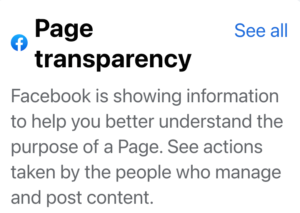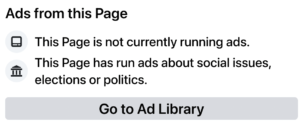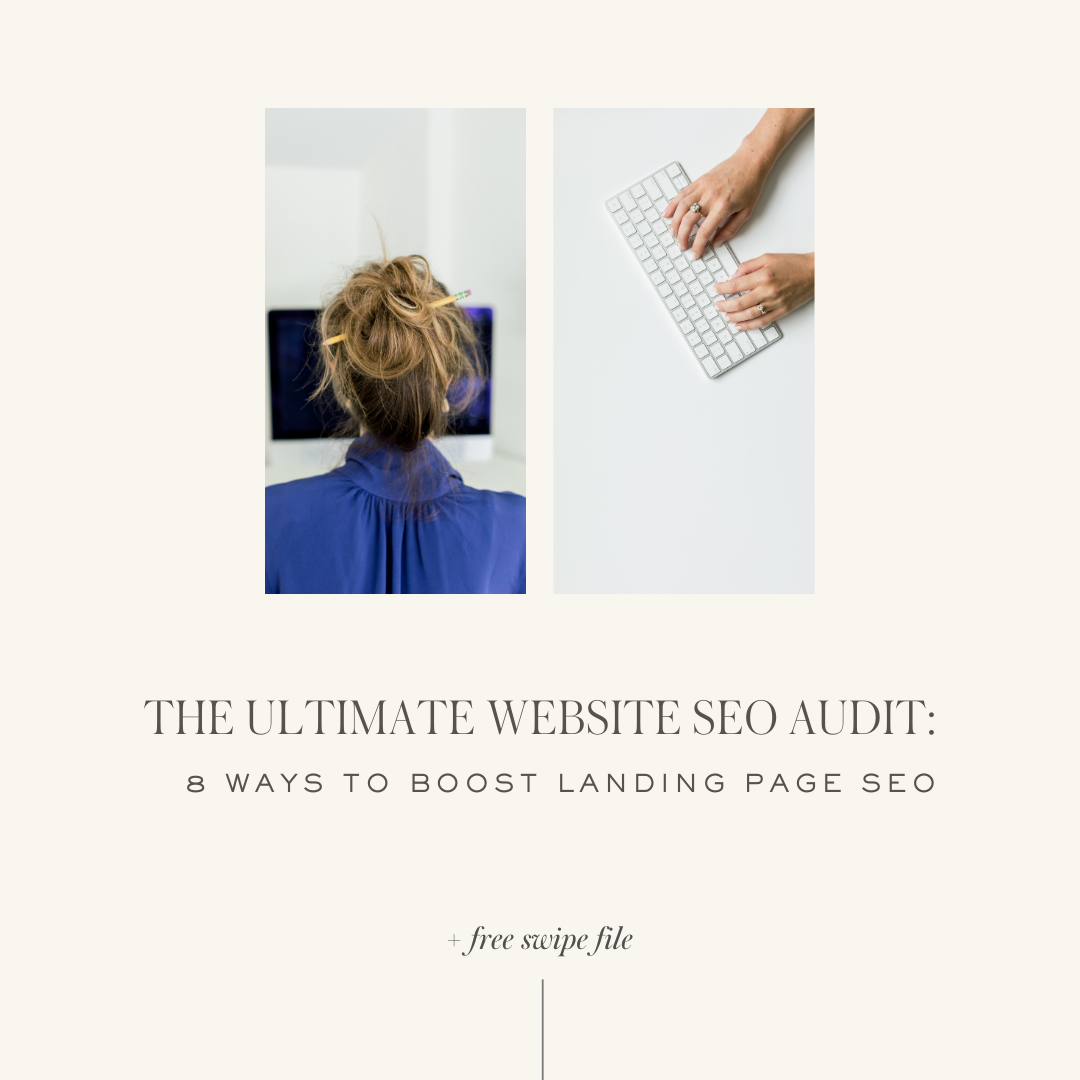Are you ready to grow your reach, get new eyes on your offers, and drive some sales? Social ads on platforms like Facebook and Instagram might be on your radar!
Of course, we know that social ads can be expensive, so how do you set yourself up for success as much as possible? With social media ad copy that designed to convert.
Since you’re here, you probably already know that you need to write killer ad copy to get results from your ad spend. So, in this blog, I’m talking all about how to write engaging ad copy that gets the click!
Below, I’ll share some Facebook ad writing tips from inside our copywriting agency so you can write your own ads (instead of outsourcing them), grab people’s attention, and convince them to take action on your offers.
Hey friend! Not sure if you should run ads, or what your budget should be? I talked all about whether or not social ads are worth it and what to consider before you get started in this video. You know I got you!
Focus on the goal first
Before you even start writing, I want you to ask yourself: “What’s the ultimate goal of this ad or ad set?” I’m sure your first response is something like, “To capture people’s attention,” and that’s great.
But I’ll be honest: Your ad copy won’t necessarily stop the scroll like imagery or ad creative does. Copy is more to expand on the image and to really hit home on the ad targeting.
You could have the best copy in the world, y’all, but if your targeting is off, that message is going to fall flat.
So, again, I ask you: What is the ultimate goal for your ad (or set of ads)? I can definitely help you here, y’all.
Your ad copy (and honestly any copy you write, for that matter) has only one job.
One. Job.
In the case of ads, that job is to get the click and take people from Facebook or Instagram or wherever they see the ad to the next place. That might be your website, landing page, sales page, etc.
These ads are relatively shorter than other copy, like a sales page, so you’ll want to make sure that you hit the goal (drive the click) in fewer words.
Fewer words means less time writing and faster ad creation, right?
* record scratches in the distance *
Not so much, my friends. We wrote 185 ads in our agency in 2021 and I’m here to tell you… short copy ≠ easy copy.
Don’t let that stop you, though, because I’m about to give you some ad-writing tips that are going to make short, impactful copywriting a bit easier for you.
Start from the bottom up
When you’re writing something, you write the first sentence and then keep going until it’s done. Right??
Actually, I have a nugget of unconventional wisdom for you: When you’re writing an ad, start writing the bottom of the ad first, where the offer and call-to-action are.
Get to the meat and potatoes first — don’t worry about how you’re going to draw someone in. This is where you share what this offer is, what they get, and how they can get it. The nitty-gritty, if you will.
I have another little hack for you: You don’t have to write this from scratch. Blowing your mind right now, aren’t I?!
If you have a landing page for your offer that’s already converting (you should know your page converts before you put ad spend behind it), pull language from over there!
This is what copywriters call “message matching.” How many times have you clicked an ad or a link, thinking you’d find one thing, only to find something totally different?
Y’all, that does not feel good. And with your ad copy, you want to make sure that doesn’t happen.
All of that to say… don’t be afraid to lift your favorite sentences from your landing or sales page — it’s not cheating. It’s smart copywriting!
This helps lace everything together with a little golden thread and creates a cohesive experience for the lovely folks clicking on your ad.
If you’ve used my Sweet 16 Sales Page Template + Copywriting Workbook for your sales page, go to the solution section and lift some of that copy for your ads. You can thank me later 😉
An important note: Consider the platform & your audience
People are on social to kick back, relax, and scroll. If you have a super formal brand voice or your offers are somewhat technical, ads are the right place to sort of “bend” your brand voice rules a bit.
Short, personality-packed ads do best on social platforms because it’s a platform full of other engaging content. You want to make sure your ad doesn’t just get scrolled right past, right?
You should also include different variations of your solution, with long-form and short-form variations. This way, you can cater to the type of people who need a bit more info before they click and the people who just want to click to learn more.
Research and find different hooks
Now that we have the solution for your ad written at the bottom, it’s time to move to the top. I know, I know, I told you it was unconventional!
The hook is the most important part of your ad copy because it’s what grabs people’s attention and pushes their eyes further into the copy. Before we send any ad live, I want to test out different hooks and copy that I can layer on top.
This is part of why I love Facebook ads, y’all — because they can tell you quickly if your audience is more responsive to one type of messaging or another. It’s like your own little copy lab!
Speaking of labs, let’s put on our lab coats and start by testing some copy.
Let’s start with a hypothesis: What do you think would grab someone’s attention as they’re scrolling? How would that be different if someone was, let’s say, new to your brand vs. someone who’s already familiar with it?
Is there a story that really resonates with new audiences? Or is there a “spicy take” that your loyal followers love to hear? Pull those into your hooks.
Remember: Different fish need different bait. Don’t be afraid to try some unique angles that help lure different people into your offer.
Type of ad hooks to try
In general, when creating ads, I like to use three to four different types of hooks in my ad sets. These include:
- Story-focused. You want people to wonder “Where are they going with this?”
- How-to. These types of ads are especially useful with lead magnets. You can do some education and point them to your resource.
- “Stake in the ground.” This is that spicy take I was talking about. Share something that you’re tired of seeing or that’s part of your mission. Don’t be afraid to have an opinion — you’re the expert!
- Dealer’s choice. Is there anything you’ve seen others do with their ads that you want to try? Now’s the time!
Take a page from other brand’s ad libraries
Not sure how you want to start your ads? Take some inspo from other people’s ads! If you’re not seeing a ton of ads as you scroll social, though, don’t worry.
Facebook offers a really cool feature: You can actually check out ads people have created from their Facebook pages and see their ads.
Just go to any brand’s Facebook page, scroll to “Page Transparency” on the sidebar, and click it.

Then you’ll see a button that says “Go to Ad Library.”

Voila! Now you can see how other brands structure their ads, what kind of hook they use, and if there’s anything you want to try for your own brand.
I don’t have to say this part, right? Don’t use Ad Libraries to copy what other folks are doing! It’s just to help you research structure and style so you can make your ads your own.
Bonus tip: How to find your “sticky” hook
Not sure which part of your existing copy to pull from when finding your hook? Here’s a tip straight from the Ashlyn tool belt for ya:
Send your landing page to some of your biz besties, your mastermind group, or peers.
Ask them to turn on Loom and read the page out loud. It never fails — whenever I have my peeps do this, they’ll pinpoint a phrase they love. “Oooh, I love that!” or “Ugh, that just really hits home.”
If their eyeballs found that line and it resonates with them, you’ll know that same line can help draw people’s eyes from their Facebook feed, straight to your ad.
Time to mix and match
Once you have your hook variants drafted, it’s time to craft some “bridge copy” that leads into the last half of the ad (that you already wrote, too!). These can be a continuation of your story, a shift into why you created the offer you’re about to tell them about, and so on.
Now… You’re still in your lab coat, right? Great, because it’s time to mix up some ad copy concoctions.
You can take a story hook and add it to the long-form solution copy you drafted.
Take some of the “stake in the ground” ad copy and sprinkle it on top of your short-and-sweet CTA copy.
You can also play with different formats for the creative, from different graphics and images to different spacing, emojis, etc.
The variations are endless — and don’t be afraid to play. I know that ad budgets can feel overwhelming, but knowing what works means that you’ll see more ROI in the long run.
One last note on format: You want your ads to look as “feed-native” as possible. I want it to look like it’s supposed to be on Facebook or Instagram, so whatever combination of parts you put together, also think about how it will look as someone scrolls.
How to know your ads are working
Ready to find out if your hypothesis and test copy are working outside your little Facebook ad copy lab? There are a few stats to look at, according to my friend Adrienne Richardson. For one, you want to get close to a 1% click-through rate. Higher is even better!
If you’re seeing that your CTR is below 1%, it might be time to tweak the ad copy to fit your audiences better — or to shift your audiences a bit.
You’ll also want to monitor your cost per action. This is how much money you spend on clicks and such.
To lower your cost per action, make sure your landing page is already converting. You could have the best ad in the world but if your landing page won’t convert, what’s the point?
If your ads are converting well and your cost-per-action is within budget, but you’re not seeing the sales or sign-ups you want… What gives?
Sorry to tell ya, but the page you’re pushing people to probably isn’t working for you. If struggling with on-page conversions, whether it’s a sales page, a landing page, or a website page, you can check out my Copywriting for Creatives course.
It’ll help you clarify your stand-out message, write your site, and launch to sell — all of which makes your ad copy more effective. None of your copy operates in a silo, alright?
The role that creative plays in ad success
While I’d love to sit here and tell you that your perfectly structured ad copy is all you need to get your ads to sell, it’s just not true.
You’ll also have to consider the imagery, graphics, or videos you add to the copy.
Of course, you want to make sure that your creative assets match the theme of the ad — you don’t want to be telling a story about a time you were burnt out in your business and have a quote of you celebrating or sitting on a beach, right?
But what else should you know about creative?
My friend Adrienne recommends that we start with static imagery. Just still photos or graphics that catch the eye — no need to jump right into video.
I personally start with a mockup version …
… a variation with my face …
… and a variation that’s copy-heavy
Just like you’re mixing and matching parts of your copy, you can mix and match your creative to see what works with different ad copy.
Honestly, friends, this is where the power of social ads lies. You can use so many different variations of your ads and quickly discern which hook reels them in, which body message gets the click, which headline works the best, and what imagery is most scroll-stopping.
It’s all based on data and you can easily turn off what’s NOT working and focus more of your budget on what IS working. It’s a copywriter’s dream — and a business owner’s, too.
Of course, I wouldn’t leave you hanging with just these tips and no way to kickstart your ad copywriting adventures. That wouldn’t be very Ashlyn of me.
So you know I’m about to hand you something you’re gonna love: My NEW ad copywriting templates inside the Copy Bar.
Reading Time: 8 MinutesReading time: 9 min. Are you ready to grow your reach, get new eyes on your offers, and drive some sales? Social ads on platforms like Facebook and Instagram might be on your radar! Of course, we know that social ads can be expensive, so how do you set yourself up for success as much […]



comments +